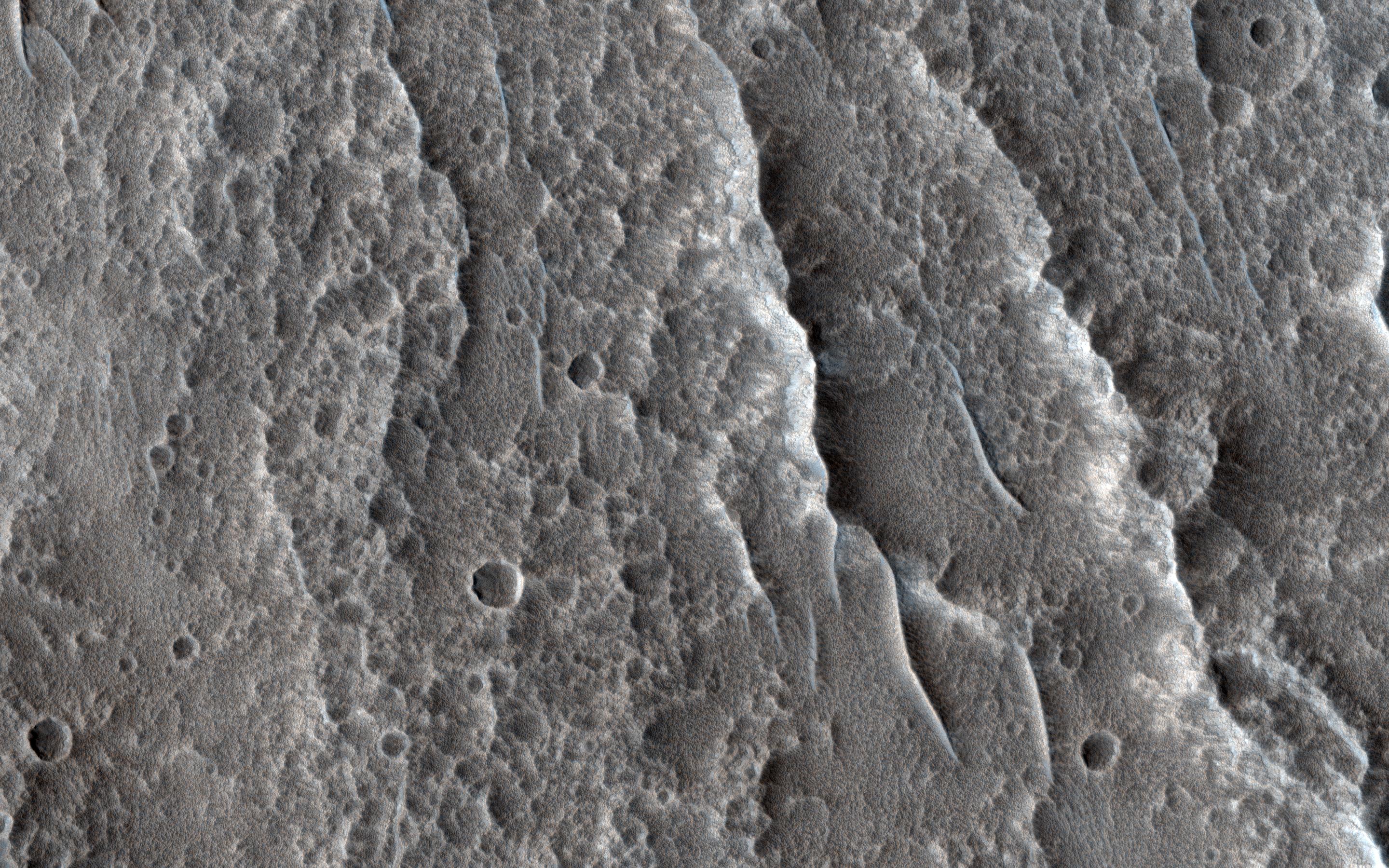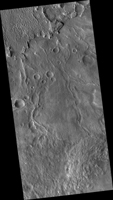
|
Down in Chukhung Crater
- Click the image above for a larger view
- Full-Res JPEG (2880 x 1800) (1.2 MB)
- Full-Res TIFF (2880 x 1800) (15.6 MB)
Caption:

Map Projected Browse Image
Click on image for larger version
Chukhung is a 45 kilometer-diameter, central pit crater in Tempe Terra, having likely formed 3 billion years ago. The southern portion of the crater floor hosts a large viscous flow feature that is hypothesized to be a glacier.
There are sinuous ridges that emanate from the margin of the flow feature toward the center of the crater. These ridges could be evidence of glacial meltwater preserved in the form of eskers, inverted channels formed when the softer sediments surrounding the channel deposits are eroded away. It is unclear whether the conditions for wet-based glaciation ever existed on Mars, but these ridges could be evidence that it once did.
The map is projected here at a scale of 25 centimeters (9.8 inches) per pixel. (The original image scale is 29.2 centimeters [11.5 inches] per pixel [with 1 x 1 binning]; objects on the order of 88 centimeters [34.6 inches] across are resolved.) North is up.
This is a stereo pair with ESP_060676_2185 .
Background Info:
The University of Arizona, in Tucson, operates HiRISE, which was built by Ball Aerospace & Technologies Corp., in Boulder, Colorado. NASA's Jet Propulsion Laboratory, a division of Caltech in Pasadena, California, manages the Mars Reconnaissance Orbiter Project for NASA's Science Mission Directorate, Washington.
Cataloging Keywords:
| Name | Value | Additional Values |
|---|---|---|
| Target | Mars | |
| System | ||
| Target Type | Planet | |
| Mission | Mars Reconnaissance Orbiter (MRO) | |
| Instrument Host | Mars Reconnaissance Orbiter | |
| Host Type | Orbiter | |
| Instrument | High Resolution Imaging Science Experiment (HiRISE) | |
| Detector | ||
| Extra Keywords | Color, Crater, Map, Water | |
| Acquisition Date | ||
| Release Date | 2019-10-21 | |
| Date in Caption | ||
| Image Credit | NASA/JPL-Caltech/University of Arizona | |
| Source | photojournal.jpl.nasa.gov/catalog/PIA23528 | |
| Identifier | PIA23528 | |
